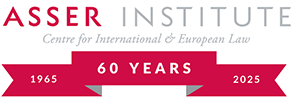The changing nature of courtroom evidence
Published 7 August 2019By Anna-Maria Andreeva

Digital evidence’s illustrative quality is a contested point and one that must be considered thoroughly alongside the rise in its use if we are to build criminal cases on such investigative work. ©iStock
The rise of technology has allowed for the more prolific permeation of different types of visual evidence in the courtroom. Whether and under what conditions visual evidence can be admitted in courts has been discussed for a long time, but it is now more than ever essential to address this topic.
The nature of this type of evidence has also changed – it is no longer simply photos that are admitted during the trial, but now also videos, collections of footage, sometimes enhanced with the help of Artificial Intelligence (AI). But not only has the type of evidence changed, so has the extent to which this evidence is relied on, as well as the types of cases that are presented in front of the bench. The rise of importance of photographic evidence in courts makes it ever more pressing to consider how we think about and accept it in our national (and international) legal systems.
Collecting and using visual evidence
One example of such work is the effort put together by the Syrian Archive group, who work through open source intelligence (OSINT) investigations to compile evidence of atrocities taking place in Syria. The team comb the internet and collect data that is already available through public channels and social media, such as YouTube, Facebook, and Twitter. They also collaborate with journalists, NGO workers and civilians in conflict areas, thus securing data as close to the source as possible. It is a lengthy and arduous process to compile data from OSINT sources, and it has resulted in thousands of gigabytes of virtual data. The Syrian Archive is using some of this data in legal proceedings, together with other organisations, who are working on a criminal investigation into the sale of Belgian materials that can be used to build chemical weapons in Syria.
In a similar vein, Forensic Architecture – a research agency based in the UK – is conducting investigative journalism by piecing together OSINT data with pattern analysis, data mining and a myriad of other emerging technologies to pinpoint the exact locations and nature of attacks in areas of conflict. Unlike the Syrian Archive, their focus is more on particular incidents in various locations, rather than a particular geographic region. The mix of architectural education and interest in emerging technologies has quite naturally resulted in the production of a film that is (again) exhibited at the Whitney Museum in New York. The short documentary is a visual portrayal of the investigation and the process of identifying the use of a specific model of gas canisters at the US border with Mexico. The work of groups such as Forensic Architecture is important not just for legal action and the documentation of atrocities across the world, but also in bringing social justice in our own social contexts. This is a type of activism reliant on emerging technologies, and new methods of data dissemination and collection. Forensic Architecture is part of the International Criminal Court’s (ICC) Scientific Advisory Board, and as such are working at the forefront of legal processes. It is imperative therefore, that the international field of law follows swiftly in establishing rules and norms regarding the permissible types and nature of evidence. As we can see already with the case against Belgium noted above, it is a matter of time before the prosecution presents such evidence in criminal trials. How we address such evidence can have a significant impact on international justice.
A more concentrated example of the collection of such visual evidence can be seen in the collaboration between Bellingcat and the Global Legal Action Network (GLAN) on ongoing war crimes committed in Yemen. The teams here are relying on similar OSINT models to collect data; however, they are also working directly with NGOs on the ground to guarantee access and reliability of footage as quickly as possible. Such efforts are not solitary and rely on pressure by legal actors to implement them into court cases. However, often these organisations are either staffed by trained lawyers (as is GLAN) or have access to legal provisions. This means that the somewhat subtle changing nature of visual evidence and its use in court cases and investigations has the potential to become part of the norm in criminal trials.
But why is it important to pay attention to visual evidence and its rise?
In a forthcoming piece, Asser researcher Dr Sofia Stolk writes of the importance of narrative construction when it comes to visual evidence. Analysing the visual evidence as part of the Al Mahdi ICC trial of 2016 on the destruction of cultural heritage, and in particular the way visual evidence was presented, demonstrates that narrative is just as important as the evidence itself. The story we tell alongside visual evidence is critical in how said evidence is interpreted in court context. Considering the increase in its use, it is imperative to consider the (lack of) structural frameworks in place to ensure its fair use in trials. Evidence of this kind is intended to be illustrative, rather than persuasive – it is intended to guide, rather than convince, but when constructed as part of a narrative in a criminal trial this can change. Digital evidence’s illustrative quality is a contested point and one that must be considered thoroughly alongside the rise in its use if we are to build criminal cases on such investigative work. Using this type of evidence can indeed help to paint a bigger picture, but to use it in court, particularly as part of the prosecution, is to also attach a particular narrative to it. This can have significant repercussions in the pursuit of truth and justice.
This blog post is written by Asser trainee Anna-Maria Andreeva.
